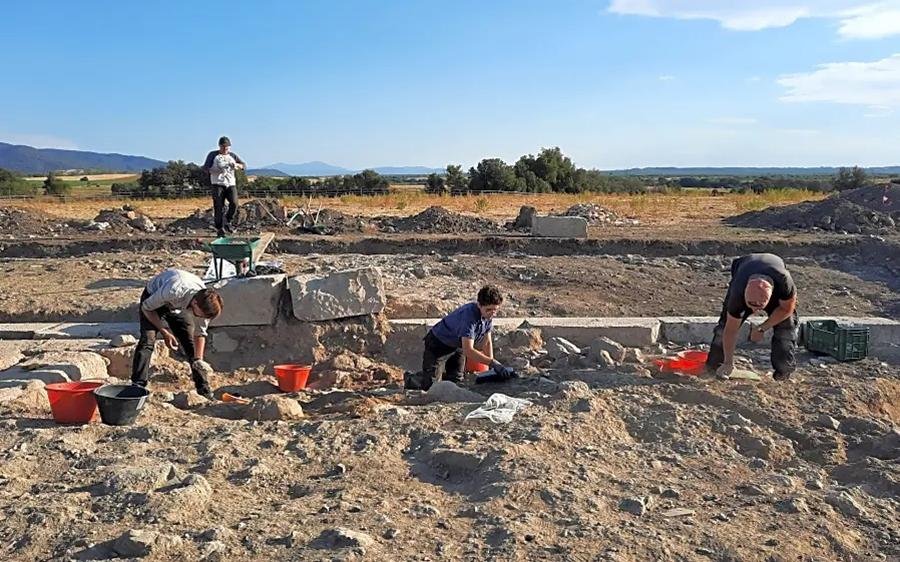Archaeologists have unearthed the ruins of a monumental temple in Vulci, an ancient Etruscan city. First excavated in the 1950s, the ruins of the city are about 16 km from the Tyrrhenian Sea between the villages of Canino and Montalto di Castro in the Italian province of Viterbo.

According to a University of Freiburg press release, the Vulci was one of the most important urban centers in Italy before the Roman empire. In the 8th century BCE, a number of small villages merged to form the city. It flourished in the 6th and 4th century BCE, largely as a result of trade, mineral extraction, and the production of bronze artifacts such as jugs and tripods.
The structure was discovered by researchers from the Vulci Cityscape mission, a joint research project of the universities of Friborg and Mainz which intended to learn about the eponymous city’s settlement strategies and urban structures. The program, which began in 2020, focuses on a 22.5 hectare operating sector in the northern part of the ancient city of Vulci.
The newly unearthed temple measures 45 meters (147 ft) by 35 meters (114 ft). The structure was constructed at the end of the sixth or beginning of the fifth century BCE.

The original building is situated to the west of the Tempio Grande, an ancient Etruscan sacred temple found in the 1950s.
The new temple is “similar” in size, shape and age as the Tempio Grande, which sits a short distance away, archaeologists Dr. Mariachiara Franceschini of the University of Freiburg, one of the project’s co-leaders, said in a release.
“This duplication of monumental buildings in an Etruscan city is rare, and indicates an exceptional finding,” stated archaeologist Paul Pasieka of the University of Mainz, the project’s other co-leader.
The Vulci were a tribe or people who gave their name to their city and were one of the legendary twelve peoples of Etruscan civilization, who formed into the Etruscan League.


































